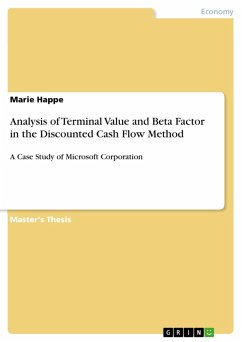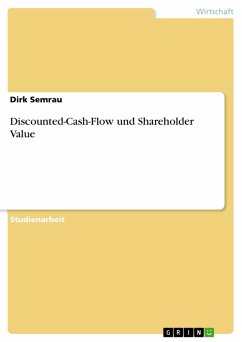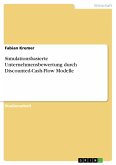Master's Thesis from the year 2020 in the subject Business economics - Investment and Finance, grade: 1,0, University of Pavia, language: English, abstract: Company valuation is requisite to identify the deviation of the intrinsic value of an asset from its market price. The Discounted Cash Flow method is a frequently used method to determine intrinsic value. It determines the intrinsic value based on the discounted future cash flow of the asset and works in two stages. The first stage refers to an explicit forecast of the cash flow followed by the second stage which captures the cash flow beyond the forecast period with a terminal value. The cash flow is usually discounted at the Weighted Average Cost of Capital which consists of the cost of debt and cost of equity. The latter is mainly determined by the systematic risk, measured with a beta factor. The aim of the present thesis is to analyze beta factor and terminal value as the key input factors of the Discounted Cash Flow model. A comprehensive overview of the different estimation methods of beta factor and terminal value will be provided and critically reviewed. To illustrate the valuation procedure and to analyze the impact of both parameters on the intrinsic value, a case study of Microsoft Corporation is conducted. The findings of the literature and the case study demonstrate that the main challenge of the Discounted Cash Flow model is the determination of terminal value and beta factor since both parameters can be estimated with different methods that lead to different results. Moreover, the case study provides evidence that the intrinsic value is sensitive to the input factors of terminal value and to the discount rate which is primarily determined by the beta factor. The results indicate that analysts who apply the Discounted Cash Flow model should be aware that this model is mainly based on assumptions and therefore can lead to different results. The dependence of intrinsic value on the terminal value and the beta factor stresses the importance of a critical examination of these both parameters and requires a need for further investigation.
Dieser Download kann aus rechtlichen Gründen nur mit Rechnungsadresse in A, B, BG, CY, CZ, D, DK, EW, E, FIN, F, GR, HR, H, IRL, I, LT, L, LR, M, NL, PL, P, R, S, SLO, SK ausgeliefert werden.









